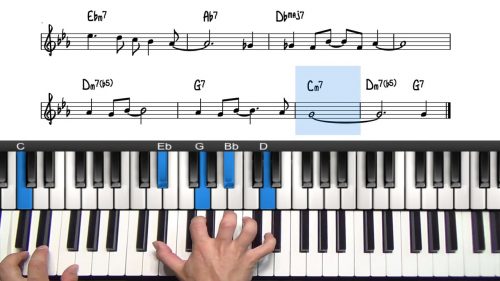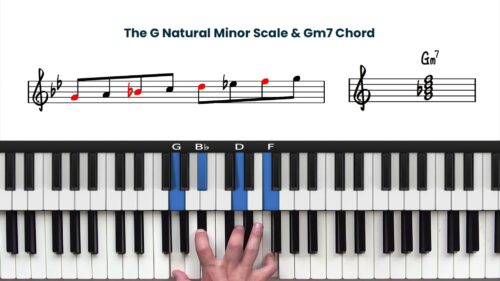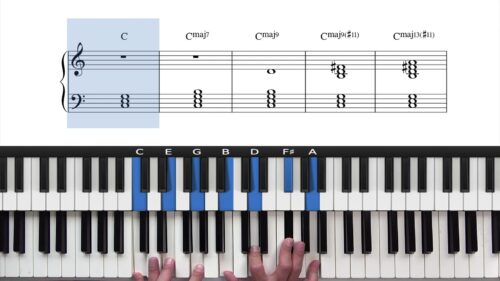Basic Minor Blues Progression
Welcome to the first lesson in our course on the minor blues progression. The purpose of this lesson is to introduce the minor blues form and explore the differences to the standard 12 bar form. You should be familiar with basic triads and 7th chords.
Check out the course on Jazz Piano Foundations if this material is new to you.
Then Minor Blues vs. The Standard 12 Bar Blues
The minor blues progression follows the standard 12 bar form but with minor 7th or minor 6th chords instead of the dominant 7th chords that you would associate with the traditional 12 bar blues.
We start by playing through with simple triad voicings, and then we extend the chords to include the 7th. The next step is to experiment with inversions to ensure good voice leading between the chords in the progression.
The Minor Blues Progression – Alternate Ending
The last 4 bars of the minor blues progression is somewhat different to the standard 12 bar blues form. In the C minor blues progression, we have an Ab7 in bar 9, leading to a G7 in bar 10, which resolves back to the tonic for the final 4 bars.
This distinctive chord progression descending by half steps is what differentiates the minor blues progression.
Lesson Downloads
-
Minor Blues Progression PDF File Type: pdf
Practice Tips
-
Start with basic triads to understand the foundation of the harmony.
-
Next extend the triads to include the 7th degree of the chord.
-
Use the iRealPro Minor Blues backing track to practice these voicings in tempo.
- In the next lesson in the course, we will enhance the form and explore rootless voicings, passing chords, and substitutions.







